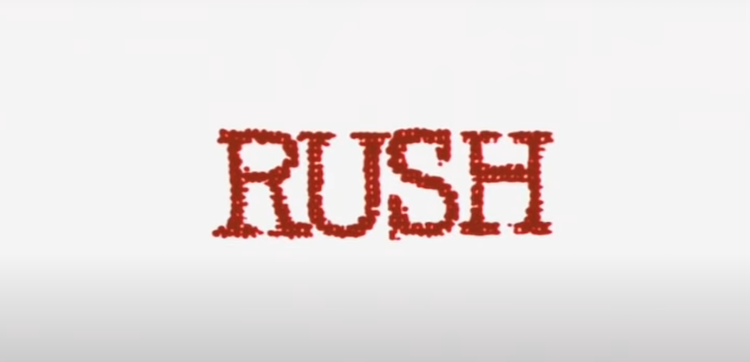Crime drama film 'Rush' and the pitfalls of undercover addiction

Screenshot via YouTube.
I was a kid in the early 1990s. More accurately, I was a kid raised by kids. My parents were young, and I saw the gap in age (or lack thereof) as a blessing and a curse. They were young enough that it was difficult for our family at times, but I was able to find an awesome balance between “parent” and “friend.”
That balance made me an “MTV baby” of sorts. I grew up watching the channel with my mother, which opened the door to a great deal of amazing music. I remember the music video for “Tears in Heaven” by Eric Clapton, which featured clips from the motion picture Rush. I had completely forgotten about the movie until I came across it while exploring the HBO Max library.
‘Rush’
When I saw the film staring back from my screen, I was instantly transported to a younger version of myself watching the movie for the first time. I recalled enjoying it, but I wanted to do a little digging before I committed to revisiting it for a column. After a brief online search, I was startled to discover that the film was based on a novel of the same name.
Rush the novel was published in 1990 by Random House. Throughout its 260 pages, the book tells a story based on author Kim Wozencraft’s personal experiences as an undercover narcotics officer. Realizing that this film was arguably “based on a true story,” I knew I had to watch it again and see if it stood the test of time.
Released in 1991, Rush stars Jason Patric and Jennifer Jason Leigh as undercover narcotics agents Jim Raynor and Kristen Cates. Raynor is a seasoned veteran of covert operations, and Cates is fresh out of the academy. The two are partners, and what begins as an investigation of potential large-scale drug trafficking morphs into an investigation of personal addiction and naivete.
The first part of the film is much more enthralling than the rest. I watched Rush with my wife, and she seemed genuinely interested. The beginning felt like the honeymoon stage: Two individuals become romantically involved (in an admittedly unromantic setting), and the audience has the pleasure of seeing that relationship blossom to its zenith.
My wife wasn’t as keen on the middle portion of the movie, though, describing it as just depressing. And she was right. It shows the sad depth of the two leads’ dire situation and the despair of their newfound drug addiction.
Rush seemed to regain her attention during its closing act. Here, the pace picks up again and the rubber starts to hit the road. We see the fallout from the main characters’ choices and the decisions they have to make to try and salvage their health, careers, sanity and, ultimately, their safety. The film culminates with a concoction of various emotions brewing throughout its run time—revenge, regret and sadness lead to recognition of the situation’s repugnant reality.
An interview with the author
I was lucky enough to score an exclusive discussion with Wozencraft. She came across as a genuine person and was a joy to interview. After touching on her new novel, Neglect, which deals with the legal system and the challenges of interacting with social services, we dove into the meat of my questions. I was very interested to learn about her writing process. Wozencraft explained that she initially wrote what would become Rush while a grad student at Columbia University. A professor took the then-600-plus-page manuscript and told her she had a story there, but it began on page 301. That started the process for what would become her most well-recognized work.
When I asked how she thought the film version compared to the novel, she was very candid in explaining that the literary version and the visual interpretation are “two different things entirely.” Wozencraft wrote Rush purely from the female point of view, that of Kristen Cates. Nevertheless, the film transformed into a “buddy cop” iteration of her story and despite how it departed somewhat from the novel’s perspective, she enjoyed it, felt it was “visually stunning” and noted that it “stayed true to the essence of the story.”
Now knowing the film had departed from her original frame of reference, I asked how, if at all, that change affected the integrity of the courtroom scenes she crafted. Wozencraft noted that those sequences in the novel are obviously longer due to the depths an author must go to paint a picture with words; still, she felt the movie encapsulated the best parts of what she wrote.
And Wozencraft knew what to write: She had lived those scenes. She was refreshingly open and honest about her guilty plea to perjury charges that resulted in a prison sentence for her false testimony regarding drug use and planting evidence to secure a conviction at the behest of her superiors.
Other examples of undercover addicts
I mentioned my mother earlier. When I let her know I was writing a column on Rush and the issue of undercover addiction, I asked what she could recall. She mentioned the actors and actresses, but she couldn’t remember much besides the general public being somewhat shocked by the film. At the time, most of mainstream America still had a relatively positive outlook concerning cops. According to her, we still kept them on a pedestal, and it was hard for people to believe that they could be so flawed. Wozencraft echoed this notion.
“I wrote the novel with the goal of exposing what was going on in the world of narcotics enforcement,” she recalled. “I do hope and I do think that the film was very realistic in its portrayal of what happens to some people in the world of undercover narcotics enforcement, and it happens more often than a lot of people like to think.” When I asked if she were the main character we see portrayed in the film, Wozencraft answered in the negative. Nevertheless, she admitted the parallels were purposeful: “I used my experiences as an undercover narcotics officer to write the novel, and I used my firsthand experience with violence and gun violence to kind of make those situations very real for the reader on the page. But it’s a three-step process to get from my life to the novel to the film.”
I had a few questions about the current state of undercover narcotics operations, and Wozencraft frankly admitted she hasn’t kept up with the topic. Nonetheless, the problem is still evident and real.
With one quick internet search, I was able to find numerous examples evidencing the detrimental impact of undercover enforcement operations and the addiction that can result. Based on the stories of officers becoming addicted to crack cocaine or hooked on heroin, substance abuse among undercover operatives does indeed seem more prevalent than the general public knows.
While there’s arguably a difference between addiction to hard drugs and an “addiction” to weed, it’s clear that substance abuse is a potential risk for undercover agents thrust into a world with a succeed-at-all-costs mentality.
Sadly, though, the issue of undercover addiction within law enforcement may not be limited to just those working undercover. According to an editorial from American Addiction Centers, “Studies show a correlation between high-stress careers and substance abuse. In the case of first responders, the job stresses involve life-and-death issues.” So even for those who don’t work in an undercover capacity, “addiction can also strike at the law enforcement community through attempts to self-medicate.”

Adam Banner
Adam R. Banner is the founder and lead attorney of the Oklahoma Legal Group, a criminal defense law firm in Oklahoma City. His practice focuses solely on state and federal criminal defense. He represents the accused against allegations of sex crimes, violent crimes, drug crimes and white-collar crimes.
The study of law isn’t for everyone, yet its practice and procedure seems to permeate pop culture at an increasing rate. This column is about the intersection of law and pop culture in an attempt to separate the real from the ridiculous.
This column reflects the opinions of the author and not necessarily the views of the ABA Journal—or the American Bar Association.



